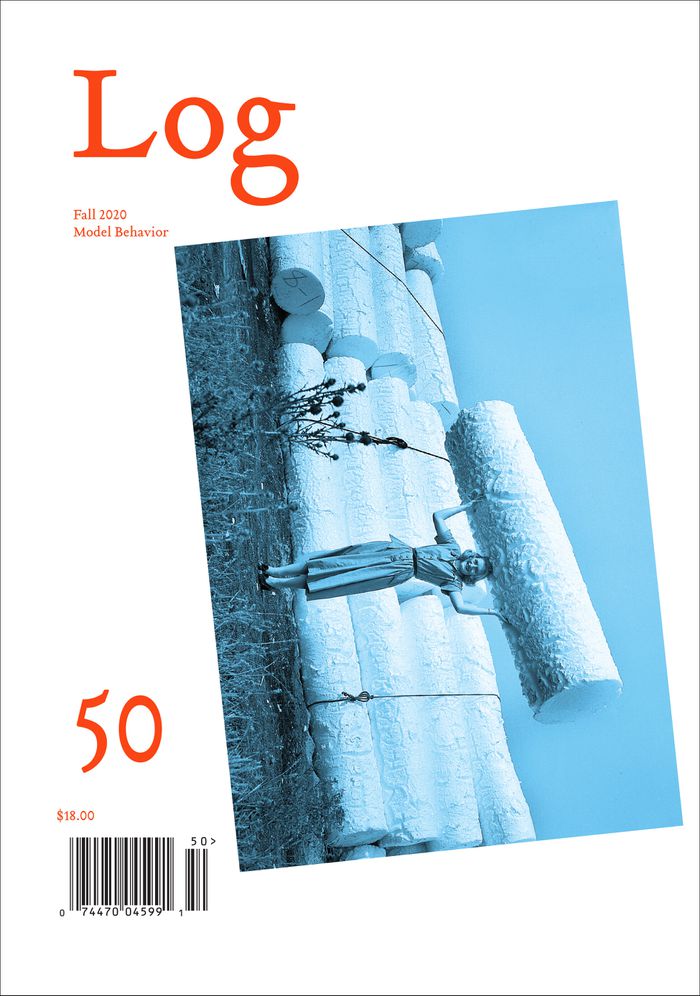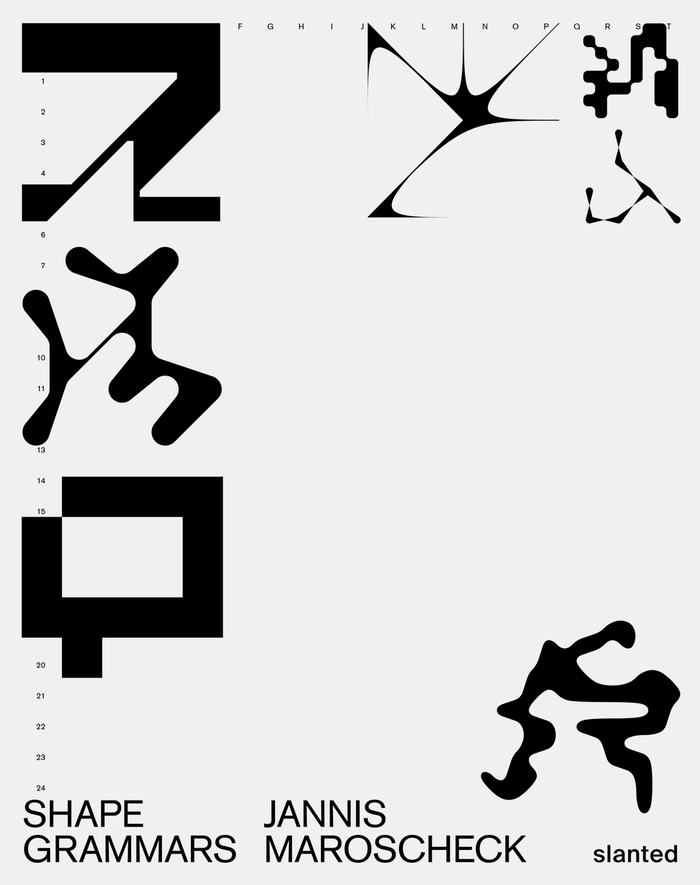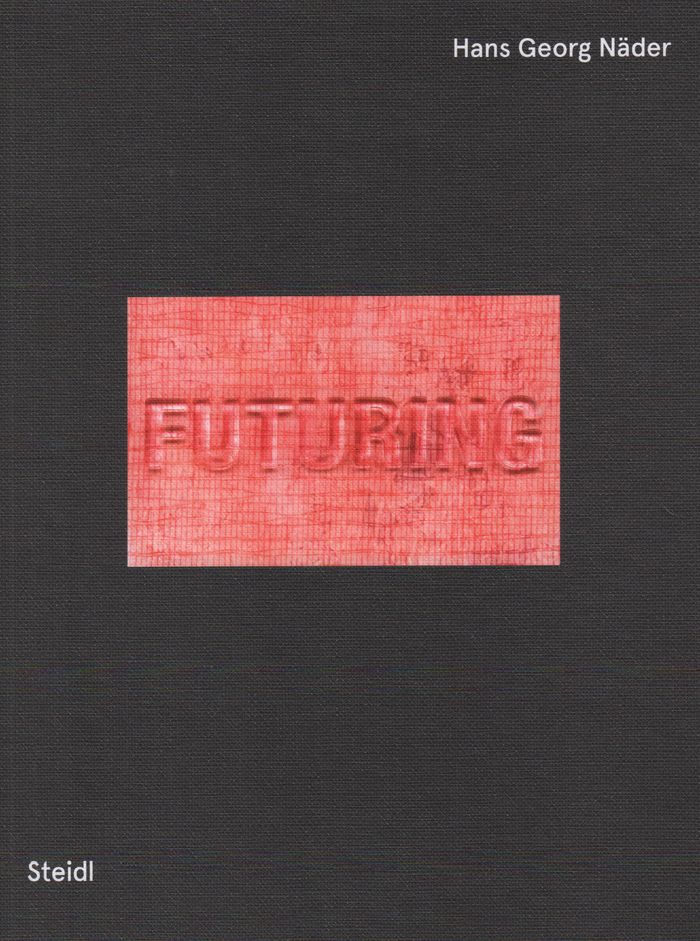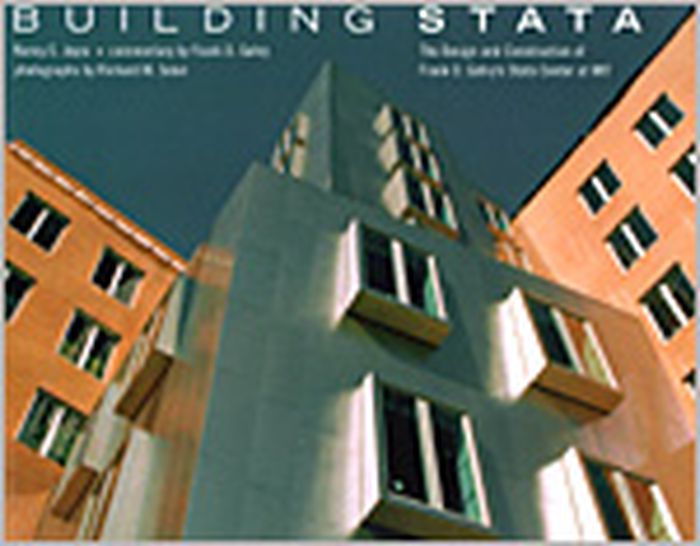$27.00
(disponible sur commande)
Résumé:
Although often considered to be a fault or a glitch in the system, the event of hallucination is central to the models of image production generated by artificial intelligence (AI). Through mining the latent space of computer vision, Trevor Paglen’s series "Adversarially evolved hallucinations" (2017–ongoing) reveals this phantasmal and hallucinatory domain. In the(...)
Adversarially evolved hallucinations
Actions:
Prix:
$27.00
(disponible sur commande)
Résumé:
Although often considered to be a fault or a glitch in the system, the event of hallucination is central to the models of image production generated by artificial intelligence (AI). Through mining the latent space of computer vision, Trevor Paglen’s series "Adversarially evolved hallucinations" (2017–ongoing) reveals this phantasmal and hallucinatory domain. In the conversation included in this volume, he discusses how we can think from within these opaque structures and, in turn, questions the frequently inflated claims made on behalf of automated image-production systems. In an accompanying essay, Anthony Downey explores the uncanny realm of algorithmically induced images and proposes that AI, through its generative modeling of the world, invariably estranges us from the present and the future.
Théorie de l’art
Log 50 fall 2020
$25.00
(disponible en magasin)
Résumé:
From the economic to the political, from public health to the climate, models seem to run the world. In architecture, the model is no longer just a physical tool for conceptualizing or representing architects’ visions but must also encompass digital and 3D-printed models, data and artificial intelligence models, business models, educational models, and even engage the(...)
Log 50 fall 2020
Actions:
Prix:
$25.00
(disponible en magasin)
Résumé:
From the economic to the political, from public health to the climate, models seem to run the world. In architecture, the model is no longer just a physical tool for conceptualizing or representing architects’ visions but must also encompass digital and 3D-printed models, data and artificial intelligence models, business models, educational models, and even engage the discipline’s own questionable history in establishing role models. A thematic issue, ''Log 50: model behavior'' interrogates models in this expanded sense: what are their values, their behaviors, and the behaviors they elicit. In a record-setting 256 pages, 39 authors, ranging from established architectural thinkers to up-and-coming practitioners, examine the role of the model in architecture today through critical essays, conversations, observations, projects, and provocations.
Revues
Shape grammars
$68.00
(disponible sur commande)
Résumé:
Based on the work of Sol LeWitt, graphic designer Jannis Maroscheck has designed and programmed his own production systems that can draw an unlimited number of individual graphic shapes. The result is a systematic catalog—a kind of dictionary of shapes—for browsing and exploring geometric systems, in which one can always discover something new. Shape Grammars is(...)
Shape grammars
Actions:
Prix:
$68.00
(disponible sur commande)
Résumé:
Based on the work of Sol LeWitt, graphic designer Jannis Maroscheck has designed and programmed his own production systems that can draw an unlimited number of individual graphic shapes. The result is a systematic catalog—a kind of dictionary of shapes—for browsing and exploring geometric systems, in which one can always discover something new. Shape Grammars is intended as a handbook for graphic designers for the design of fonts, logos and pictograms, which, in addition to 150,000 generated shapes, shows some potentials and limitations of generative design. At the same time, the work serves as a basis for further research on more complex systems and artificial intelligence. The computer can thus already function as a dialog partner in the creative process.
$61.00
(disponible sur commande)
Résumé:
As a concept, Emergence has captured the zeitgeist, embodying the pervasive cultural interest in genetics and biological sciences. In the sciences, Emergence is an explanation of how natural systems have evolved and maintained themselves, and it has also been applied to artificial intelligence, information systems, economics and climate studies. The potential of the(...)
The architecture of emergence: The evolution of form in nature and civilisation
Actions:
Prix:
$61.00
(disponible sur commande)
Résumé:
As a concept, Emergence has captured the zeitgeist, embodying the pervasive cultural interest in genetics and biological sciences. In the sciences, Emergence is an explanation of how natural systems have evolved and maintained themselves, and it has also been applied to artificial intelligence, information systems, economics and climate studies. The potential of the mathematics of Emergence that underlie the complex systems of nature is now being realised by engineers and architects for the production of complex architectural forms and effects, in advanced manufacturing of ‘smart’ materials and processes, and in the innovative designs of active structures and responsive environments. This book provides a detailed exploration of the architectural and engineering consequences of this paradigm, and a detailed analysis of geometries, processes and systems to be incorporated into new methods of working.
Architecture écologique
$45.00
(disponible en magasin)
Résumé:
For generations, world-leading German prosthetics company Ottobock has been restoring mobility to people and developing wearable bionics to mobilize the human body. Published on the centenary of Ottobock, this book presents the future of human mobility as envisioned by Hans Georg Näder, chairman of the company and grandson of its founder. What roles will(...)
Hans Georg Näder: Futuring Human Mobility
Actions:
Prix:
$45.00
(disponible en magasin)
Résumé:
For generations, world-leading German prosthetics company Ottobock has been restoring mobility to people and developing wearable bionics to mobilize the human body. Published on the centenary of Ottobock, this book presents the future of human mobility as envisioned by Hans Georg Näder, chairman of the company and grandson of its founder. What roles will digitalization, robotics, prostheses, artificial intelligence and the imagination play in how we optimize and employ our bodies, and shape the development of humanity? Conceived and realized by Thomas Huber, with photos by Christoph Neumann, 'Futuring Human Mobility' explores these questions and their philosophical, ethical, social, economic and medical implications in our changing global community, and incorporates interviews, essays, short stories and artwork by 40 international experts including David Chipperfield, Philipp Craven, EVA & ADELE, Yuval Noah Harari, Hugh Herr, Hiroshi Ishiguro, Chandran Nair, Carsten Nicolai, Neo Rauch, Wolfgang Schäuble, Kevin Warwick and Ranga Yogeshwar.
Design industriel
$37.50
(disponible sur commande)
Résumé:
This book chronicles the planning and construction process of the Frank Gehry-designed Ray and Maria Stata Center at MIT. Taking us from the historical background and architectural context at MIT through the interaction of the clients' needs and the architect's vision to the choice of building materials and construction methods, "Building Stata" offers a detailed look at(...)
Architecture, monographies
mai 2004, Cambridge, Mass.
Building Stata : the design and construction of Frank O. Gehry's Stata Center at MIT
Actions:
Prix:
$37.50
(disponible sur commande)
Résumé:
This book chronicles the planning and construction process of the Frank Gehry-designed Ray and Maria Stata Center at MIT. Taking us from the historical background and architectural context at MIT through the interaction of the clients' needs and the architect's vision to the choice of building materials and construction methods, "Building Stata" offers a detailed look at the evolution of a major work by a master architect. The purpose of the Stata Center is to bring the "intelligence sciences" - computer science, artificial intelligence, information and decision systems, linguistics, and philosophy - together into a space that emphasizes research-focused collaboration. Frank Gehry's design integrates flexible and interconnected workspaces and incorporates a series of steps from public to private space, with places for social and intellectual interaction on lower levels giving way to space for study and contemplation on the upper floors; thus a two-level warehouse-like space is topped by two towers. The Center is wrapped around a series of outdoor terraces visible from a central court in both towers. The characteristic Gehry curves are clad in metal, the more block-like elements in brick. The architectural drawings and photographs in "Building Stata" document the making of the Stata Center from concept to concrete reality. The photographs by Richard Sobol portray a work in progress, evoking the beauty of its architectural form and capturing the telling detail - the building's sculptured shape against a clear blue sky, or construction workers perched on a massive curve of metal.
Architecture, monographies
$39.95
(disponible sur commande)
Résumé:
In this book, Mario Carpo reviews the long history of the computational mode of production, showing how the merger of robotic automation and artificial intelligence will stop and reverse the modernist quest for scale. Today's technologies already allow us to use nonstandard building materials as found, or as made, and assemble them in as many nonstandard, intelligent,(...)
Beyond digital: Design and automation at the end of modernity
Actions:
Prix:
$39.95
(disponible sur commande)
Résumé:
In this book, Mario Carpo reviews the long history of the computational mode of production, showing how the merger of robotic automation and artificial intelligence will stop and reverse the modernist quest for scale. Today's technologies already allow us to use nonstandard building materials as found, or as made, and assemble them in as many nonstandard, intelligent, adaptive ways as needed: the microfactories of our imminent future will be automated artisan shops.The post-industrial logic of computational manufacturing has been known and theorized for some time. By tracing its theoretical and technical sources, and reviewing the design theories that accompanied its rise, Carpo shows how the computational project is now being recast by the urgency of the climate crisis and by the global pandemic, which has tragically proven its viability. Looking at the work of a new generation of designers, technologists, and producers, this volume offers a new modern agenda for our post-industrial future.
Théorie de l’architecture
Robot futures
$27.00
(disponible sur commande)
Résumé:
With robots, we are inventing a new species that is part material and part digital. The ambition of modern robotics goes beyond copying humans, beyond the effort to make walking, talking androids that are indistinguishable from people. Future robots will have superhuman abilities in both the physical and digital realms. They will be embedded in our physical spaces, with(...)
Robot futures
Actions:
Prix:
$27.00
(disponible sur commande)
Résumé:
With robots, we are inventing a new species that is part material and part digital. The ambition of modern robotics goes beyond copying humans, beyond the effort to make walking, talking androids that are indistinguishable from people. Future robots will have superhuman abilities in both the physical and digital realms. They will be embedded in our physical spaces, with the ability to go where we cannot, and will have minds of their own, thanks to artificial intelligence. In ''Robot futures,'' the roboticist Illah Reza Nourbakhsh considers how we will share our world with these creatures, and how our society could change as it incorporates a race of stronger, smarter beings. Nourbakhsh imagines a future that includes adbots offering interactive custom messaging; robotic flying toys that operate by means of “gaze tracking”; robot-enabled multimodal, multicontinental telepresence; and even a way that nanorobots could allow us to assume different physical forms. Nourbakhsh examines the underlying technology and the social consequences of each scenario. He also offers a counter-vision: a robotics designed to create civic and community empowerment. His book helps us understand why that is the robot future we should try to bring about.
Social
Persons and things
$35.00
(disponible sur commande)
Résumé:
Moving effortlessly between symbolist poetry and Barbie dolls, artificial intelligence and Kleist, Kant, and Winnicott, Barbara Johnson not only clarifies psychological and social dynamics; she also re-dramatizes the work of important tropes—without ever losing sight of the ethical imperative with which she begins: the need to treat persons as persons. In "Persons and(...)
Persons and things
Actions:
Prix:
$35.00
(disponible sur commande)
Résumé:
Moving effortlessly between symbolist poetry and Barbie dolls, artificial intelligence and Kleist, Kant, and Winnicott, Barbara Johnson not only clarifies psychological and social dynamics; she also re-dramatizes the work of important tropes—without ever losing sight of the ethical imperative with which she begins: the need to treat persons as persons. In "Persons and Things", Johnson turns deconstruction around to make a fundamental contribution to the new aesthetics. She begins with the most elementary thing we know : deconstruction calls attention to gaps and reveals that their claims upon us are fraudulent. Johnson revolutionizes the method by showing that the inanimate thing exposed as a delusion is central to fantasy life, that fantasy life, however deluded, should be taken seriously, and that although a work of art “is formed around something missing,” this “void is its vanishing point, not its essence.” She shows deftly and delicately that the void inside Keats’s urn, Heidegger’s jug, or Wallace Stevens’s jar forms the center around which we tend to organize our worlds. The new aesthetics should restore fluidities between persons and things. In pursuing it, Johnson calls upon Ovid, Keats, Poe, Plath, and others who have inhabited this in-between space. The entire process operates via a subtlety that only a critic of Johnson’s caliber could reveal to us.
Théorie de l’architecture
The second digital turn
$33.95
(disponible sur commande)
Résumé:
Almost a generation ago, the early software for computer aided design and manufacturing (CAD/CAM) spawned a style of smooth and curving lines and surfaces that gave visible form to the first digital age, and left an indelible mark on contemporary architecture. But today's digitally intelligent architecture no longer looks that way. In The Second Digital Turn, Mario Carpo(...)
The second digital turn
Actions:
Prix:
$33.95
(disponible sur commande)
Résumé:
Almost a generation ago, the early software for computer aided design and manufacturing (CAD/CAM) spawned a style of smooth and curving lines and surfaces that gave visible form to the first digital age, and left an indelible mark on contemporary architecture. But today's digitally intelligent architecture no longer looks that way. In The Second Digital Turn, Mario Carpo explains that this is because the design professions are now coming to terms with a new kind of digital tools they have adopted—no longer tools for making but tools for thinking. In the early 1990s the design professions were the first to intuit and interpret the new technical logic of the digital age: digital mass-customization (the use of digital tools to mass-produce variations at no extra cost) has already changed the way we produce and consume almost everything, and the same technology applied to commerce at large is now heralding a new society without scale—a flat marginal cost society where bigger markets will not make anything cheaper. But today, the unprecedented power of computation also favors a new kind of science where prediction can be based on sheer information retrieval, and form finding by simulation and optimization can replace deduction from mathematical formulas. Designers have been toying with machine thinking and machine learning for some time, and the apparently unfathomable complexity of the physical shapes they are now creating already expresses a new form of artificial intelligence, outside the tradition of modern science and alien to the organic logic of our mind.
Architecture numérique









